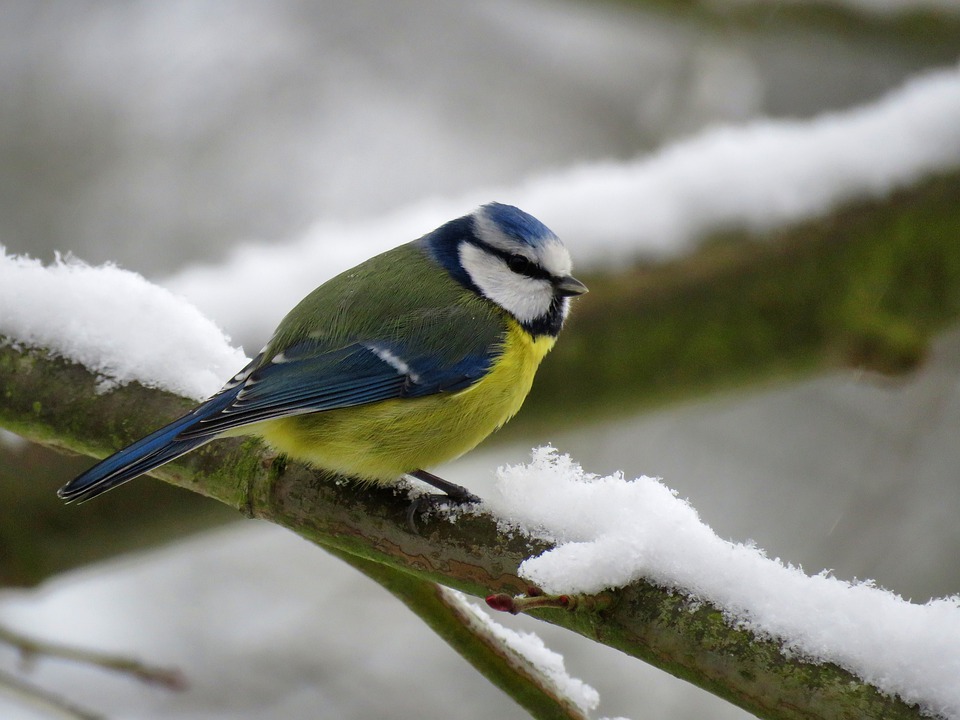Winter bird feeding is an excellent way for people to connect with nature, and provide critical support to local birds. In the Big Bear Valley, we’ve already had the first snow of the season, and are gearing up for the cold months ahead. As we stay tucked in our homes, it is good to keep in mind the wild birds who brave the Winter season.
Throughout the year, most wild birds eat diverse, rich foods such as seeds and insects. During the cold months, birds appetites change, much like our own. Providing high calorie and high fat food for wild birds is important as this helps keep them well fed and warm, increasing their chance of Winter survival. Suet is an excellent way to support Winter birds, and can be served through a variety of inexpensive feeders. We recommend placing feeders that are easily accessible for birds under a form of shelter to protect them from predators and extreme weather.

Birds still need a source of water throughout the winter when many warmer weather sources freeze over. To help supply them with water, place bird baths in your yard. Another tip we recommend is placing a stick across your bird bath so when the ice melts, birds can drink from it with ease. It is good to cover ceramic bird baths and keep the water out of them throughout winter.
Finding a natural shelter in trees or bushes may not be easy for birds during the winter, so they may search for man-made houses. You can place a nesting box geared for specific birds found in your backyard outside your home to protect them from cold weather. Try and position bird house openings facing away from prevailing winds. In Big Bear, winds typically are out of the West, sometimes the East, so facing the front of the bird house to the North or Northeast is helpful.
| Winter Bird Feeding Checklist 1.) High Energy Food 2.) Unfrozen Water 3.) Shelter |
Got questions? We have answers. Stop by Chirp for help and to check out our variety of heated bird baths, bird houses, and suet feeders.



2 comments
Loved Tori’s singing, “Blackbirds”! Should I still be putting out hummingbird feeders in this cold weather? Always thought they flew South in winter.
Barbara, it depends where you are. If you are in an alpine mountain environment like Big Bear Lake, the hummingbirds will migrate away when winter conditions dictate, in which case your hummingbird feeders will simply sit frozen. If you have put them away for the winter, you can put them back out when things start warming up in the Spring, and when you start seeing them about. If you are in a more moderate environment like we have “down the hill” from us in Big Bear Lake, say low level coastal or desert communities, the hummers can be quite active through the Winter. Right now you can see them busy during winter in Studio City: https://www.youtube.com/watch?v=pXe8MpU7uzk.